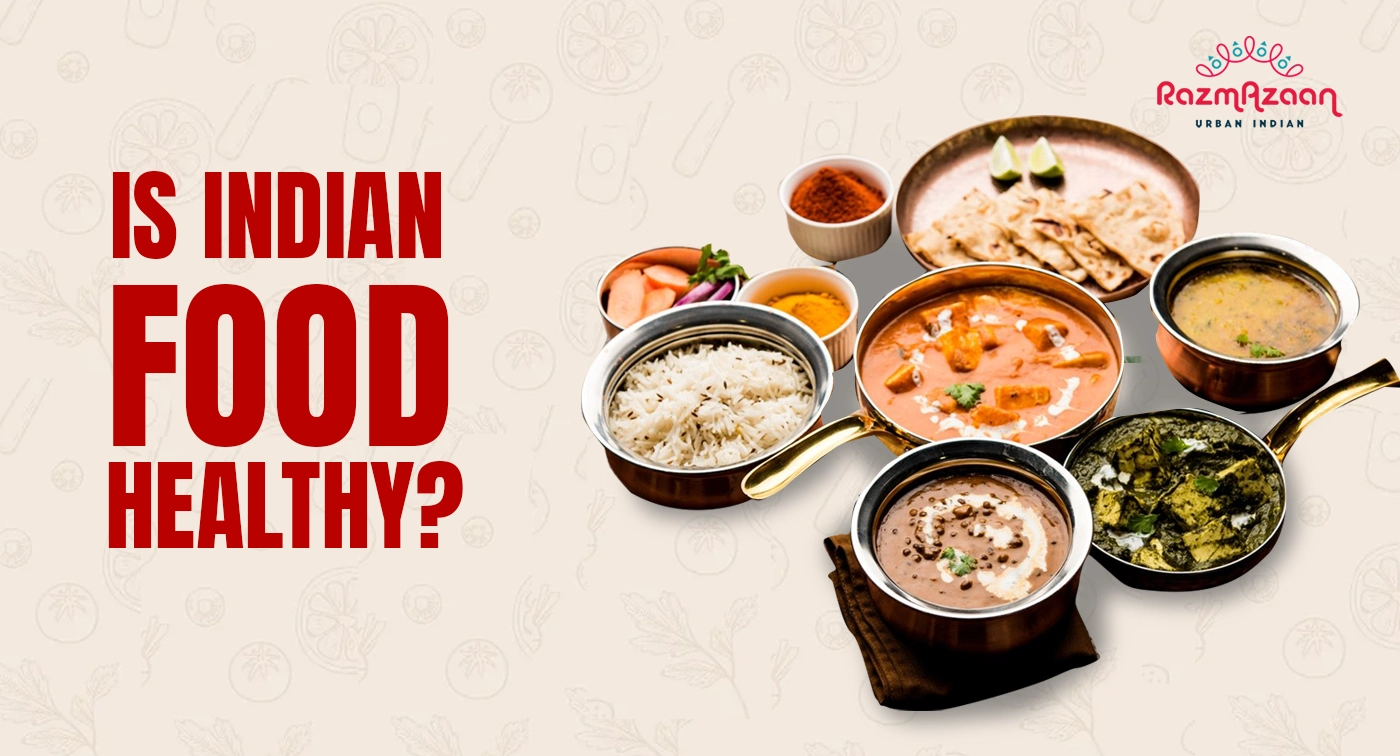India has many cultures and delicious foods. Some people think Indian food is unhealthy but that is not true. Like any food, it depends on the ingredients, how it is made, and how much you eat. Indian food is popular worldwide for its aromatic spices and flavors. It is also nutritious and balanced. If you like spicy food, you will definitely love Indian food.
Indian food is known for being heavy, spicy, hot, and tasty. But some Western countries believe it is unhealthy. Keep reading to clear up some misconceptions about Indian food.
Understanding the Indian Food Habits
Indian eating habits are diverse and vary by region but some common features can be found in Indian cuisine:
Vegetarianism: Many Indians follow a vegetarian diet due to religious and cultural beliefs, especially in Hinduism, Jainism, and Buddhism. Popular vegetarian dishes include Dal Makhani, Khadai Paneer, Veg Kofta, Chole or Chana Masala, Masala Dosa, and Dum Aalo.
Spices: Indian food uses many spices like cumin, coriander, turmeric, cardamom, cinnamon and cloves. These spices add flavor and aroma and have medicinal properties.
Rice and Bread: Rice and bread are staples in Indian meals. Rice is usually served with curries and lentil soups while Indian breads are made from wheat flour including naan, roti, and paratha.
Street Food: Street food is a big part of Indian cuisine which is sold from food carts and stalls. Popular street foods include chaat (spicy snacks), vada pav (potato fritters in a bread roll), and dosa (a crispy crepe made from fermented rice and lentil batter). Indian street food also features fusion dishes like Tandoori Momos, Noodles, Manchurian, and Chinese Bhel.
Regional Variations: Indian cuisine changes from region to region. For example, Northern Indian food is different from Southern Indian food. Each region has its unique dishes, ingredients, and cooking styles.
Which Healthy Ingredients Are Used in Indian Food?
Vegetables: Most Indian dishes have lots of vegetables. Fresh tomatoes and onions are used to make tasty masala sauce and green spinach is perfect for Saag Aloo. Vegetables are important for a healthy diet. Many Indian dishes like Bengan Masala are full of vegetables.
Legumes: Legumes are a key part of Indian cuisine and provide protein, fiber, and other nutrients. Popular legumes include lentils, chickpeas, and peas. They are found in many dishes and contribute to the healthiness of Indian food.
Spices & Herbs: Indian food uses many spices and herbs to create its unique flavors. These spices also have health benefits.
Turmeric: Known for its health benefits as an antioxidant and anti-inflammatory, turmeric is used in traditional Indian medicine. Turmeric is used in dishes like Tikka Masala and Biryani.
Ginger: Ginger is known for its digestive benefits, anti-inflammatory properties, and immune-boosting effects. It adds a warm, fiery aroma to food and is used in curries like Rogan Josh, Biryani, and Tikka Masala.
Cumin: Cumin contains antioxidants and aids digestion by stimulating enzyme production. It is a versatile spice used in many Indian dishes.
Other spices with health benefits include coriander, cardamom, fenugreek, and black pepper are also used in Indian food.
Clarification of the Misconception of Indian Cuisine as Being Unhealthy
Many people think Indian food is unhealthy but that is not entirely true. Some dishes can be high in calories, fat, and sodium but many healthy and nutritious options are available. Here are some common misconceptions about Indian food:
Indian food is always spicy and greasy:
● Some Indian dishes can be spicy and rich but many are mild and light using fresh vegetables and lean proteins. Indian cuisine is very diverse and offers various vegetarian and non-vegetarian options to suit different dietary needs and preferences.
● Mapo Tofu and Fried Rice with Tofu, Edamame, and Sweetcorn are not just less spicy and greasy but also delicious and nutritious.
All Indian food is fried or cooked in lots of oil:
● Some dishes are fried or sauteed in oil but many Indian recipes use healthy methods like baking, grilling, or steaming. Traditional Indian cooking often uses plant-based oils like mustard, sesame, or coconut which are healthier than processed oils.
● Mildly spiced and roasted Kale & Spirulina Bhaji is a perfect snack that is not cooked in lots of oil.
Indian food is high in carbs and low in protein:
● Many people think Indian food is high in carbs and low in protein. However, many dishes are rich in lentils, legumes, and beans which are excellent sources of protein, fiber, and other essential nutrients. Indian cuisine also includes whole grains like rice, quinoa, and millet which are nutritious and filling.
Conclusion
Indian cuisine is diverse, flavorful, and healthy. Not all Indian food is spicy or heavy as there are many regional variations. For healthy Indian cuisine options, you can try RazmAzaan which is the top spot for authentic Indian food in Muscat, Oman. As the best Indian restaurant in Muscat, we are proud to offer both delicious and healthy food to our valued customers. Start your journey towards healthy living with us today.




